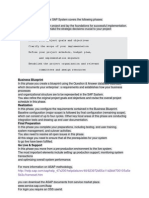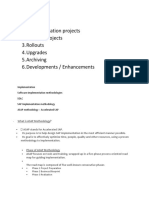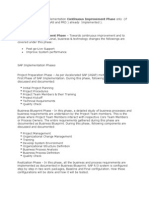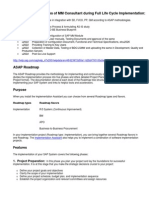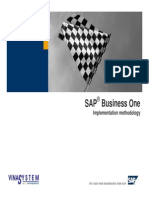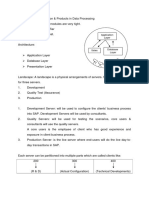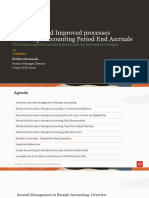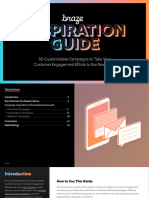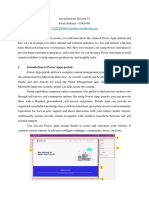SAP Implementation Phases:
> There are 6 steps of a SAP Implementation Project:
Project Preparation
Business Blueprint
Realization
Final Preparation
Go Live
Post Production Support
Project Preparation: In this phase, ERP (SAP) tries to get projects from the client. Most
clients consider more than one option for their business and then give all options a try to see
which one provides the best result. In most cases, clients get the ERP software license directly
from the software companies. This step may or may not include a test to check which ERP
system is most suitable for the client. Once the client has decided on its ERP system, they
make the landscape of the project. In this step, server information, project cost, resources,
subject matter experts (SME) and business teams are decided by the PMO (Project
Management Organization). It consists of project managers, a steering committee, core
business members and sponsors. A project team studies legacy systems and gather
information regarding core systems, interfaces, what interfaces the client wants, what is
necessary, what is nice to have etc. The team carries out ‘as is’ studying, a study of the current
system and its processes. The project management team also hires resources and carries out
project planning and outline.
Business Blueprint: In this phase the core team does “GAP” analysis, an analysis of the
differences between the system as is and the system to be studied. Allocated resources write
down the rules and requirements for the new system. Integration points, interfaces and process
maps are finalized. Functional consultants write the functional specification. If needed,
technical specifications are written down for developers to do further configuration. A testing
team also started working on preparing testing steps and scenarios. Financial specifications
and technical specifications are created in this step for further development and
configurations.
Realization: In this step, functional consultants carry out configuration. Development is done
for the required customization. Testing is carried out by the core team. Basis configuration is
carried out by the security team. A basis team moves all configurations from one server to
another for testing purpose. Testing is mostly done in the quality control server. All the
configurations upload master data across all modules. Unit testing and integration testing has
been done by the testing team. Unit testing, integration testing and day-in-the-life testing
happen at this stage.
Go – Live Phase: In this step, all configurations from the golden client will be moved to
other services. Uploading master data into the new system is done mostly using LSMW,
BAPI or BADI. Cut-over activities are done only when we stop the legacy system and start
using the SAP system. End-user training and user documentation are carried out in this pre-
go-live stage. After all cut-over activities, SAP implementation goes live in a production
environment.
Post Production Support: In this step, the team helps the client to solve if any production
issue arose during configuration, master data change or transaction issues. Also, the team will
provide training to users and super users. All the support documentation work has been
completed in this step. Uncategorized







